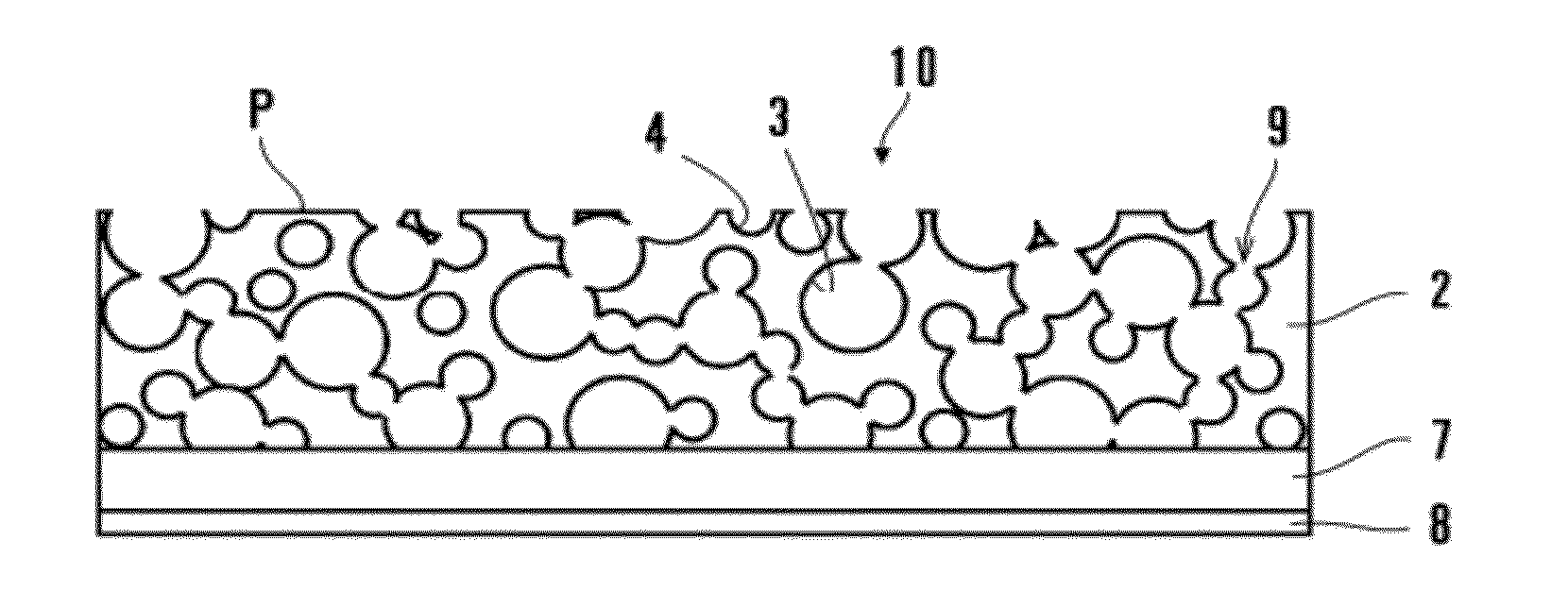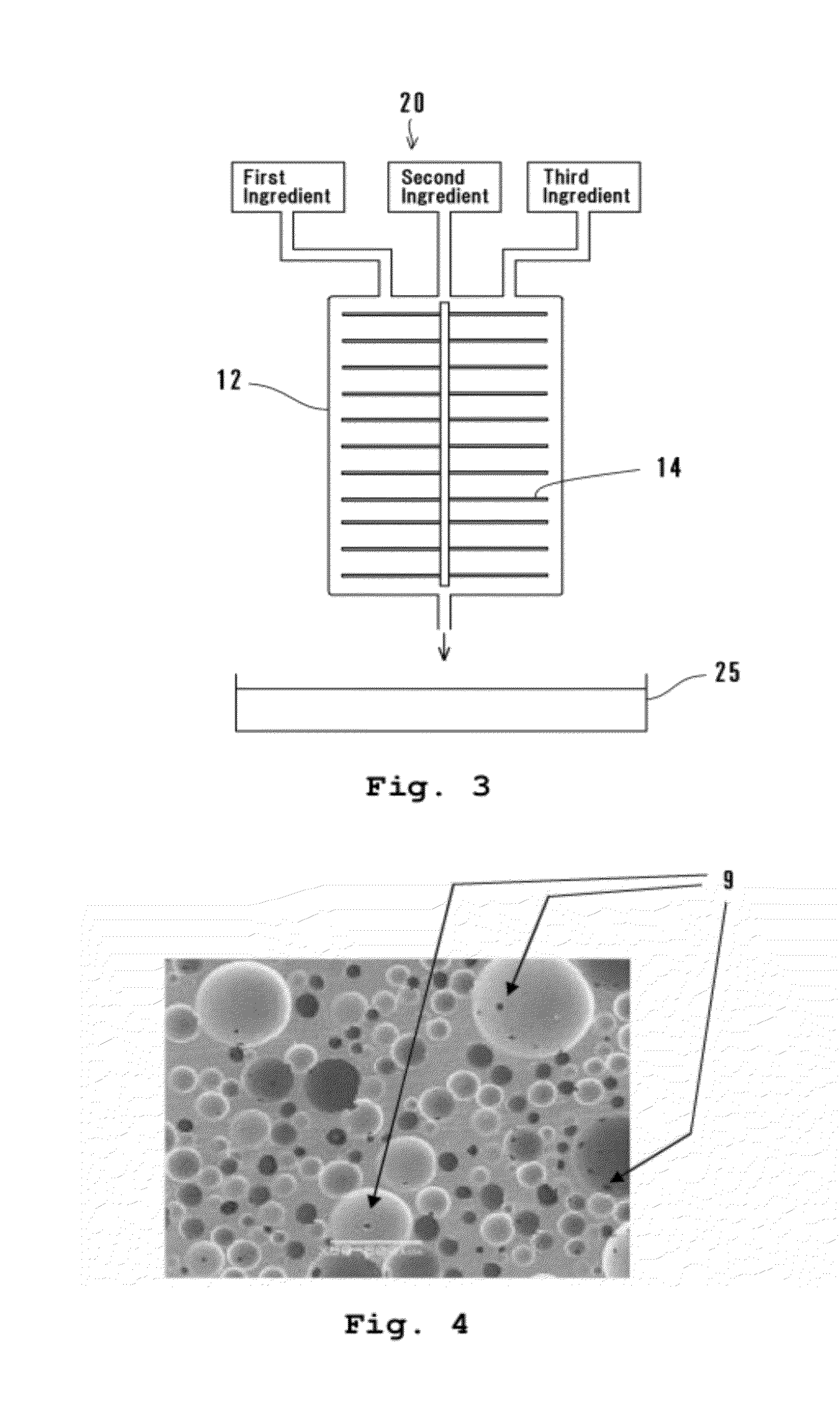Polishing pad, manufacturing method thereof and polishing method
a polishing pad and manufacturing method technology, applied in the direction of grinding machines, manufacturing tools, grinding devices, etc., can solve the problems of deterioration of the polishing pad itself, lowering of wet heat resistance, lowering of chemical resistance or the like, etc., to improve the affinity of the polishing liquid and stabilize the polishing performance
- Summary
- Abstract
- Description
- Claims
- Application Information
AI Technical Summary
Benefits of technology
Problems solved by technology
Method used
Image
Examples
example 1
[0066]In Example 1, prepolymer of the first ingredient obtained by reacting 2,4-TDI, PTMG having a number average molecular weight of about 1000 and diethylene glycol was heated to 55 deg. C. and degassed under a reduced pressure. This prepolymer had an isocyanate containing amount of 9.6%. MOCA of the second ingredient was melted at 120 deg. C. and degassed under a reduced pressure. The dispersion of the third ingredient was obtained by mixing PTMG having a number average molecular weight of about 1000, water, catalyst (TOYOCAT-ET manufactured by Tosoh Corporation) and silicone-based surfactant (SH-193 manufactured by Dow Corning Toray Silicone Company Ltd.) at a ratio of 2.5 / 0.1 / 0.05 / 0.05. In this dispersion, a mixed ratio of the silicone-based surfactant falls upon 0.5 weight parts when converted to per one weight part of the water. After the first, second and third ingredients were degassed under a reduced pressure, they were supplied to the mixing tank 12 at a ratio of 79.0 / 18....
example 2
[0067]In Example 2, a polishing pad B of Example 2 was manufactured using the urethane sheet 2 in the same manner as Example 1 except that an addition ratio of the silicone-based surfactant was set to 0.03. At this time, a mixed ratio of the silicone-based surfactant falls upon 0.3 weight parts when converted to per one weight part of the water.
[0068](Control 1)
[0069]In Control 1, a polishing pad C of Control 1 was manufactured using the urethane sheet in the same manner as Example 1 except that an addition ratio of the silicone-based surfactant was set to 0.15. At this time, a mixed ratio of the silicone-based surfactant falls upon 1.5 weight parts when converted to per one weight part of the water.
[0070](Control 2)
[0071]In Control 2, a polishing pad D of Control 2 was manufactured using the urethane sheet in the same manner as Example 1 except that an addition ratio of the silicone-based surfactant was set to 0.01. At this time, a mixed ratio of the silicone-based surfactant falls...
PUM
| Property | Measurement | Unit |
|---|---|---|
| Length | aaaaa | aaaaa |
| Length | aaaaa | aaaaa |
| Time | aaaaa | aaaaa |
Abstract
Description
Claims
Application Information
 Login to View More
Login to View More - R&D
- Intellectual Property
- Life Sciences
- Materials
- Tech Scout
- Unparalleled Data Quality
- Higher Quality Content
- 60% Fewer Hallucinations
Browse by: Latest US Patents, China's latest patents, Technical Efficacy Thesaurus, Application Domain, Technology Topic, Popular Technical Reports.
© 2025 PatSnap. All rights reserved.Legal|Privacy policy|Modern Slavery Act Transparency Statement|Sitemap|About US| Contact US: help@patsnap.com



